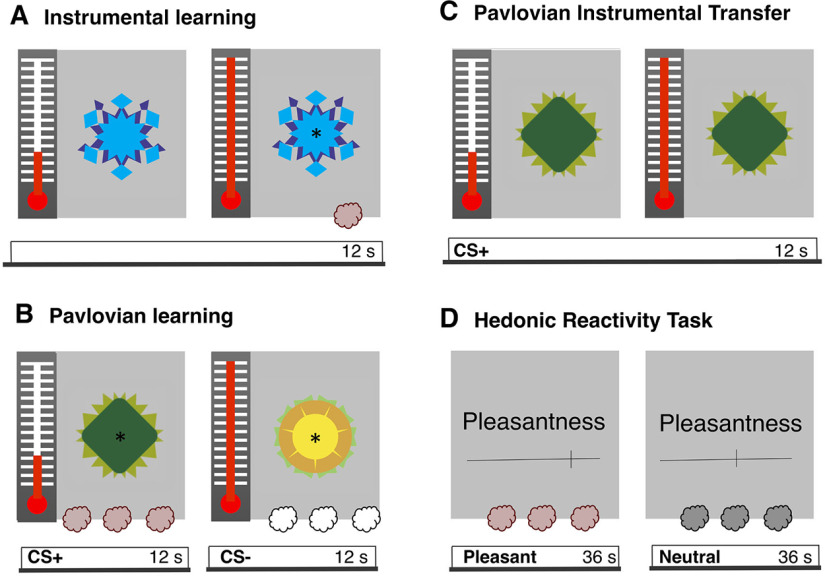Figure 1.
Illustration of the methodological procedure. A, B, During day 1, participants underwent instrumental and pavlovian learning outside the scanner. During instrumental learning (A), participants learned to associate an instrumental action with an outcome. More precisely, they learned to squeeze a handgrip to trigger the release of the olfactory reward. During pavlovian learning (B), participants learned to associate two visual stimuli with the presence or the absence of an outcome. More precisely, they were exposed to repeated pairings of the CS+ with the olfactory reward, whereas the CS− was paired with odorless air. C, D, During day 2 participants underwent a PIT test and a hedonic reactivity task inside the scanner. The PIT test (C) was administered under extinction. The CS+ and the CS− were displayed in random order (here, a CS+ trial is illustrated), and participants could squeeze the handgrip if they wished to do so. The PIT task was adapted from Talmi et al. (2008). During the hedonic reactivity task (D), participants were presented with the olfactory reward, a neutral odor, and odorless air. They were asked to evaluate on a visual analog scale their perception of the pleasantness (from 0, extremely unpleasant, to 100, extremely pleasant) and the intensity (from 0, not perceived, to 100, extremely strong) of the odor.

